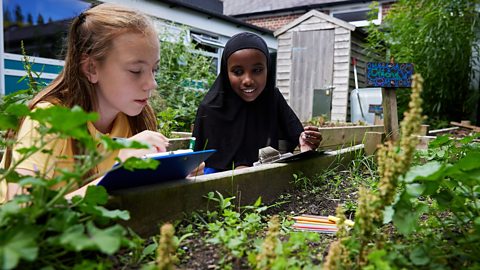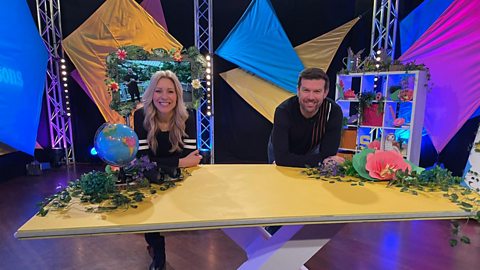
Create a climate where both you and your children thrive ‚Äď it is so worth it!
By Kira Redmond, Primary Teacher
In this article for primary teachers, Kira Redmond ‚Äď a primary school teacher ‚Äď offers practical tips on how to refresh the classroom, ready for the new term.
We’ve all felt the excitement of a new school year approaching… the relished opportunity of a new beginning, new children to meet and bond with, new lessons to be planned and taught, and quite often, new displays to be thought of and created. For some of you, a classroom move will have also been thrown into the mix, giving you another brand new opportunity.
This time of year is a brilliant time to be thinking about trying something new in your classroom environment, perhaps giving it a well needed refresh or just adding some tweaks here and there.
Whether you’re a shiny new ECT or have been teaching for 20+ years, we all need different ideas and new insights, so here are my top five tips for getting your classroom ready for the new term:

1. Try a theme!
We all know the importance of reading and how essential it is to get children hooked onto quality literature, not only for their academic progress but for their own enjoyment. Theming your room is just one way of doing this. Choose a brilliant author or a fantastic book to start with - show the children your own passion for it, and their interest will definitely be piqued.
When choosing your own theme, the possibilities are endless! I know a teacher who once themed her room on Charlie and the Chocolate Factory, complete with a pop-up greenhouse made into a glass elevator. Another colleague who worked in KS1 themed her room on The Gruffalo, with cardboard trees, toadstool cushions and a tiny mouse which sat on her desk. It’s a brilliant way of letting you (and your team’s) creativity shine.
Last year, I decided on a Harry Potter theme for my classroom, knowing the excitement those books could bring. I knew some children had seen the films but few had read the novels, and I thought this was a perfect way to encourage children to read some fantastic fiction. My reading area was filled with Hogwarts trinkets, a handmade Mirror of Erised and Hedwig fairy lights, to name a few things. The theme continued around the room, from book box labels to cloakroom labels, a ‚ÄėWand-erful Work‚Äô board, ‚ÄėWizard Words‚Äô and even a ‚ÄėVocab Alley‚Äô to display some great vocabulary. It‚Äôs been amazing to see how immersed the children have become in this magical world and the impact it has had on their happiness and overall enjoyment of being in the classroom.
Give it a try - find an amazing theme for the new school year and see what fun you can have!

2. Celebrate and support through displays
Do you remember being a child and feeling that incredible sense of pride when you saw your work up on the wall of your classroom? This is what we should be doing for our children. Make sure you choose a range of pieces of work, not always the best in the class, so that all children experience this sense of pride at their efforts being celebrated on display.
I’ll never forget the look on one of my boys' faces in Year 1 when he realised that his writing (something he often struggled with) was on our display - definitely a goosebumps moment! When creating a display to celebrate children’s work, I’ve always thought that it works better not to go over the top with extravagant, all singing, all dancing additions to the display boards. Let the children’s work stand out, they are the stars!
Another important use for displays is to help the children make progress and support their independent learning, and in this instance, I’ve found that less is often more. When children are surrounded by numerous pieces of information, suddenly appearing one day presented in different colours all over the walls, they often block it out and it doesn’t mean anything to them.
At the start of the year, I don‚Äôt have many resources on the walls. I don‚Äôt like displays to look ‚Äėfinished‚Äô, as that isn‚Äôt the point of them for me. As the term progresses, I will add to the walls and displays with the children, so that they fully understand what we are including and why. I‚Äôve found this to be the best way of children actually using these resources when working on their own to support their learning.

3. Do you really need that?
How many classrooms have you been in where the statutory spellings are displayed on the wall, often on bricks or jigsaw pieces? Sometimes the writing is so small that the children at the back of the room are unable to read it. It often feels as though these things are being used to fill a space, rather than as a learning tool, and as such, they don’t actually help the children with their learning because they become wallpaper.
Instead of having things like this up on the walls as a permanent feature, try having some key spellings each week on display and reference them in your literacy lessons. Ensure that the children understand them in context and they no longer become wallpaper, they become a tool that children can use when working independently.
This works for other printable resources that are stuck onto walls and never used. Save yourself the laminating and cutting out and think… do we really need that?
4. Keep it calm…
If you ask any of the staff I’ve worked with, they will all tell you the same thing about my preference for my classroom - keep it pastel and neutral.
Your classroom sets the mood for your children, and a brightly coloured, busy classroom inevitably has an impact on them (and on you too). I’ve found that keeping the colour scheme calm helps to support children with their learning, rather than distract them from it. This works just the same for adults too: a lovely TA at our school backed one of my boards in neon yellow during lockdown and I found I literally couldn’t tear my eyes from it!
Pastel shades are often associated with peace, relaxation and happiness - sounds ideal, doesn’t it? We want our children to enjoy being in our classrooms and we want to provide them with a safe, secure space where they feel able to make as much progress as possible, both with their learning and their social and emotional skills. A soothing environment lends itself perfectly to that.
This idea also ties in nicely with my next tip…

5. Remember, you have to look at it too!
Think about all of the hours we spend in our classrooms each week. Your room should be a calming, happy space, not just for your children, but for you too. I love being in my classroom because it’s a space that I’ve designed to make myself feel as content as possible.
Think about what makes you feel happy and then see how that ties in with your classroom and your children. Personally, I love plants and flowers, so we have a few pots around our classroom that the children also help to take care of, teaching them both responsibility and how to effectively care for them too. I also have a few trinkets dotted around the room, on shelves or windowsills - these things bring me joy and having them around just makes the classroom feel a little more homely.
When you‚Äôre happy in your space, it clearly comes across to your children, and this in turn impacts their mood too. Our school staff all wear a poem on their lanyards as a reminder of why we are in our jobs, and there is one line which ties in perfectly with my final tip here: ‚ÄúIt‚Äôs my personal approach that creates the climate; it‚Äôs my daily mood that makes the weather.‚ÄĚ
Create a climate where both you and your children thrive ‚Äď it is so worth it!

Top 5 tips for avoiding back-to-school burnout. document
Five points to think about to make sure you are looking after yourself in the new term.

How to teach children about climate change. document
Primary science specialist Claire Seeley details ways of teaching about climate change that ensures accuracy and sensitivity for young learners.

How to get the best out of Live Lessons? document
Four things that can help make the back to school season just that bit easier.
